Create and edit a Program
To start using Easy Agile Programs, you’ll need to create a Program.
A Program (or called an Agile Release Train) is a group of teams working together towards a shared goal or roadmap. Teams in Easy Agile Programs are represented by Jira boards.

The Program roadmap page in Easy Agile Programs shows the series of Increments in a Program.
Create a new Program
Users with Manage Programs permission can create a new Program from the Program list page.
Learn how to find the Easy Agile Programs app in Jira.
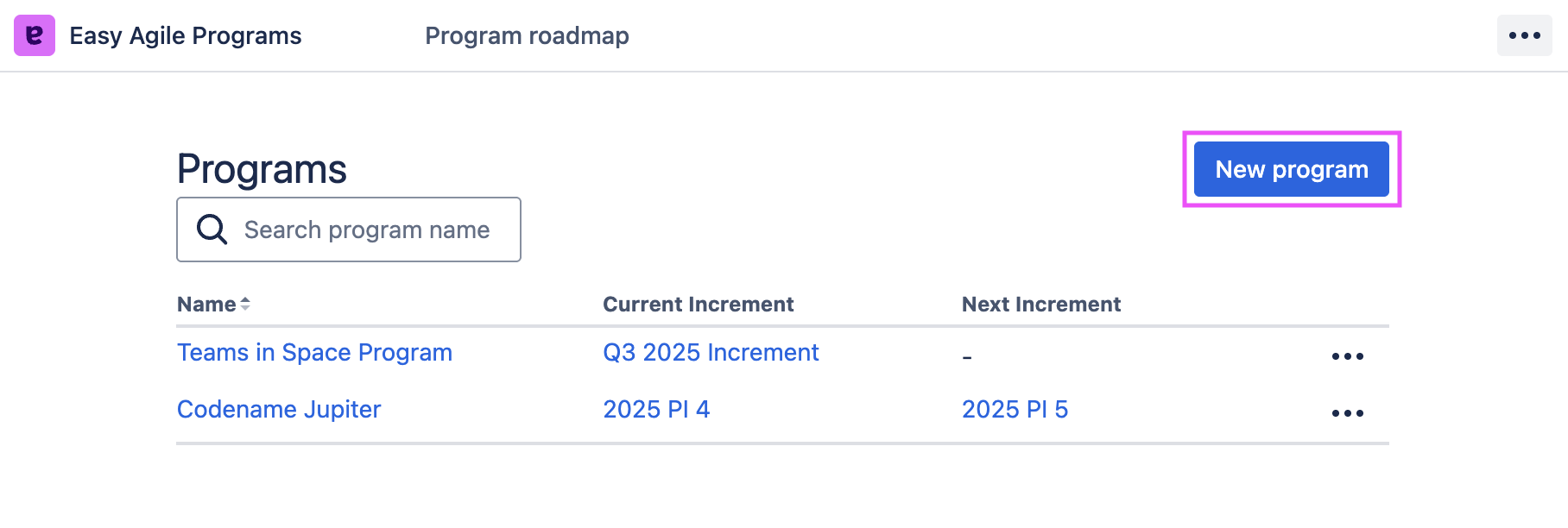
In the latest version of Easy Agile Programs, you’ll see the following six-step process. This includes the Cloud app, and app versions 5.3.0+ on Data Center.
If you’re using Easy Agile Programs v5.2.1 or earlier on Jira Data Center, you’ll see a one-page form instead of this six-step process. Find instructions for the older Create Program form here.
The create program workflow is a six-step process:
1. Name your program
Enter a name for your Program. This can be changed later.
The Program name will also show in the “Program” custom field on issues scheduled in Program.
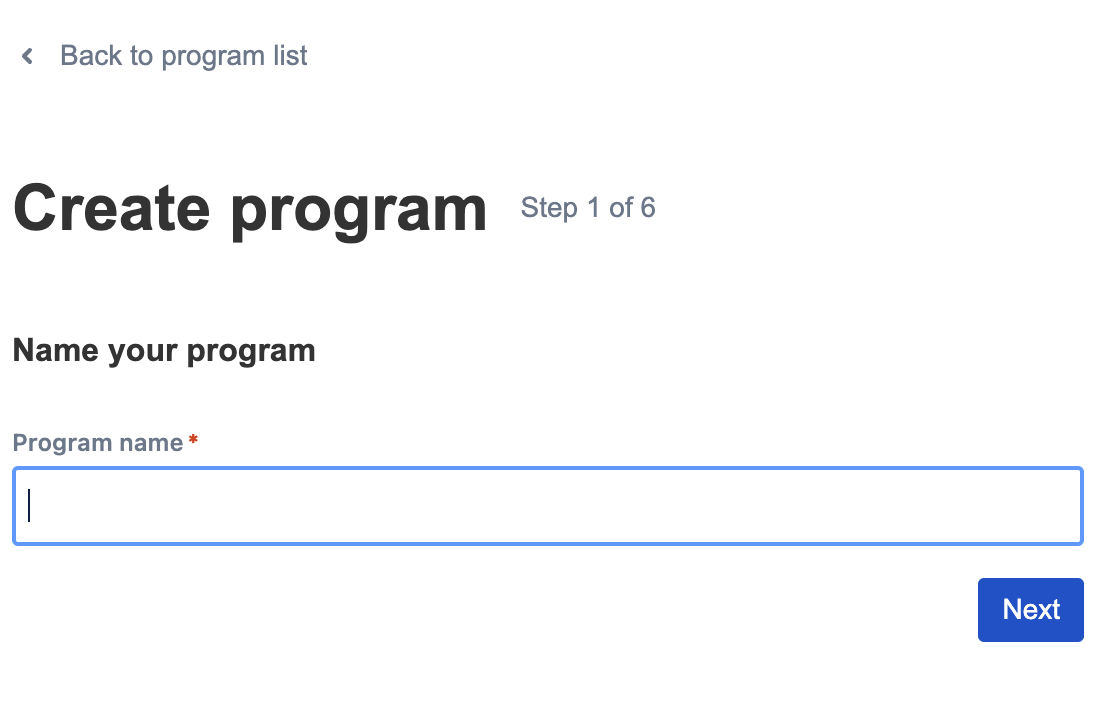
2. Add your teams
Add a board from Jira for each team who’ll work in this program.
You can choose any Scrum, Kanban or team-managed board, including boards already used in other programs.
For more info on team boards, see: What is a "team" in Easy Agile Programs? Configuring Jira Boards
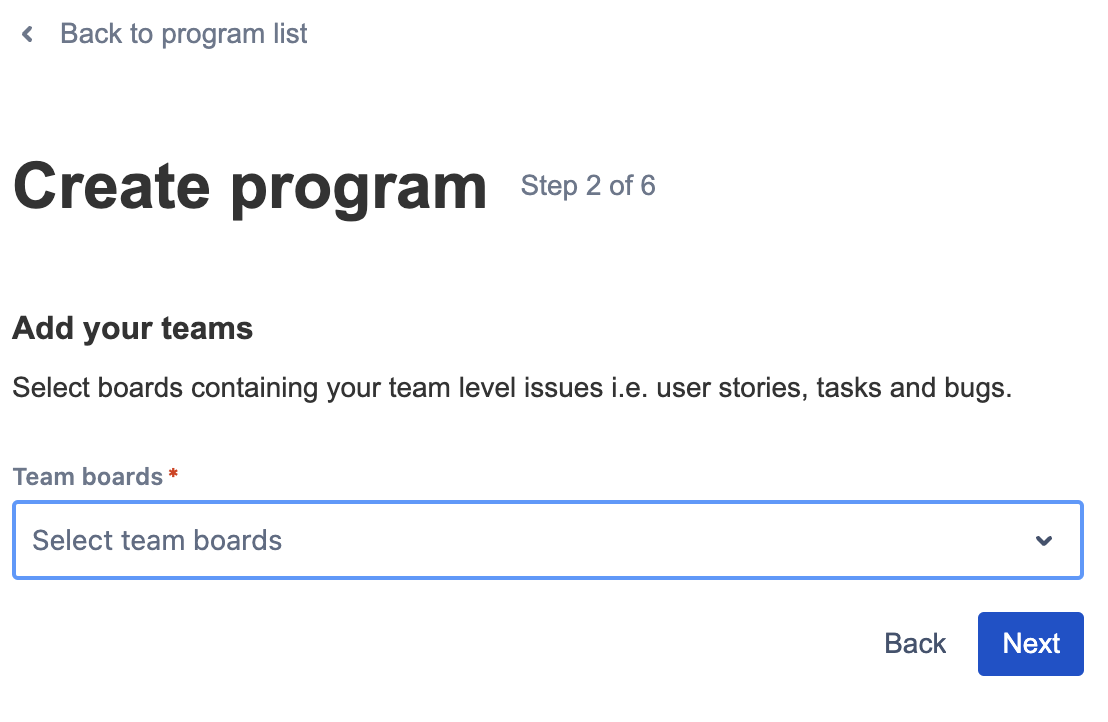
3. Choose issues for your roadmap with the Roadmap issue source
You can choose to build your roadmap using epics from the selected team boards.
Alternatively, manage the roadmap using a dedicated Jira board. The board filter query will determine what issues are used in Easy Agile Programs.
You cannot change this selection after creating the Program. You can switch which Jira boards are used.
See Configuring the Roadmap issue source for guidance on finding the right option for your situation.
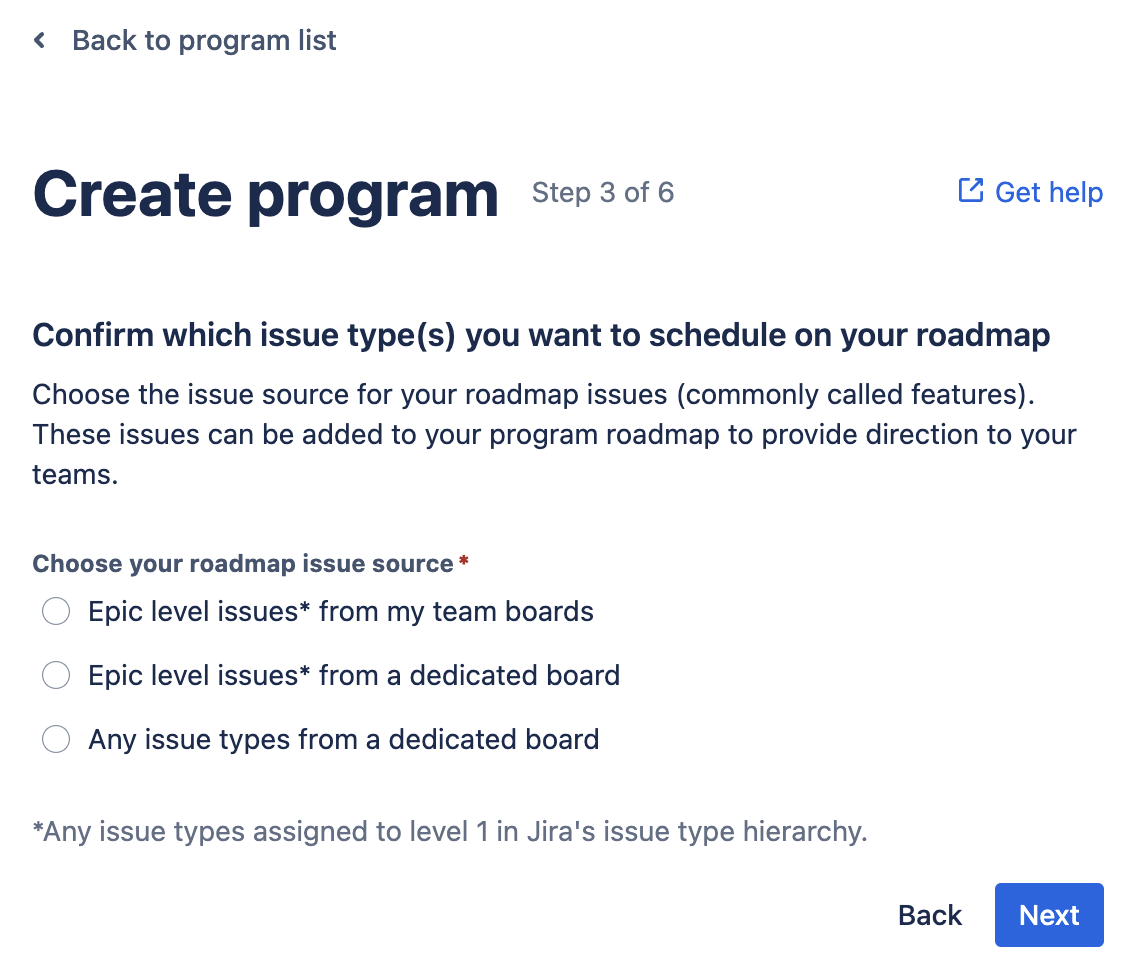
On Jira Cloud Premium only, epics now include all epic-level (level 1) issues from your issue type hierarchy.
4. Configure third level hierarchy (optional)
Connect your teams with higher level business initiatives (i.e. capabilities) by adding an additional level of hierarchy to your program.
Select the board that contains your third level issues. You may need to create a new board in Jira that contains the issues you wish to display.
Select the Jira link type that connects your features (e.g. Jira epics) with the third level issues.
This step is optional. For more details, Third level hierarchy.

5. Configure date syncing (optional)
Keep your features (and third level hierarchy issues) in sync with Jira by selecting the start and end date fields used.
This will allow for real time integration between Easy Agile Programs, Jira and Advanced Roadmaps so there’s less manual work to keep everything up to date.
For date syncing to work correctly, the date fields selected must be shown on the Jira edit issue screen. This is something your Jira Administrator can help you with.
For more details, see Date syncing with native Jira date fields
This step is mandatory when using third level hierarchy (step 4).
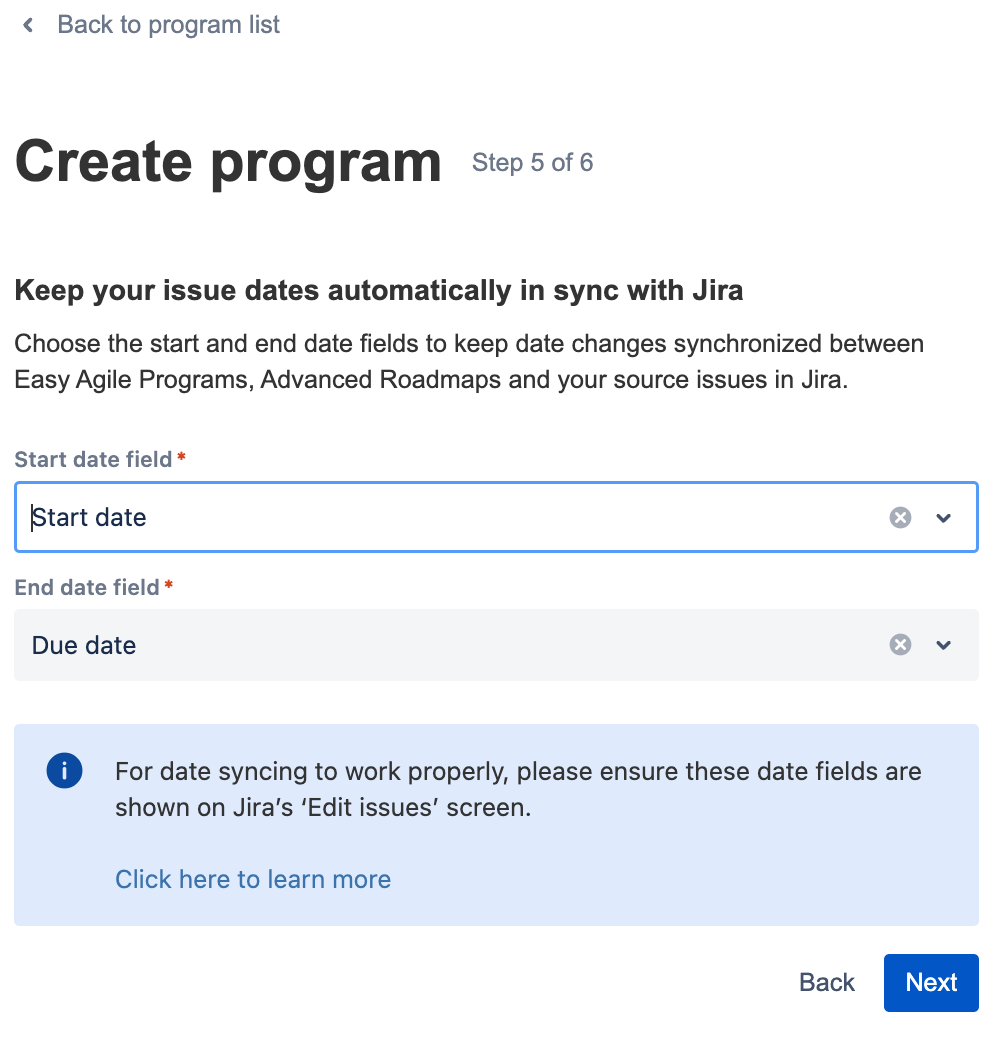
6. Choose a dependency link type
Use the dropdown to select the dependency link type you want to visualise on your program.
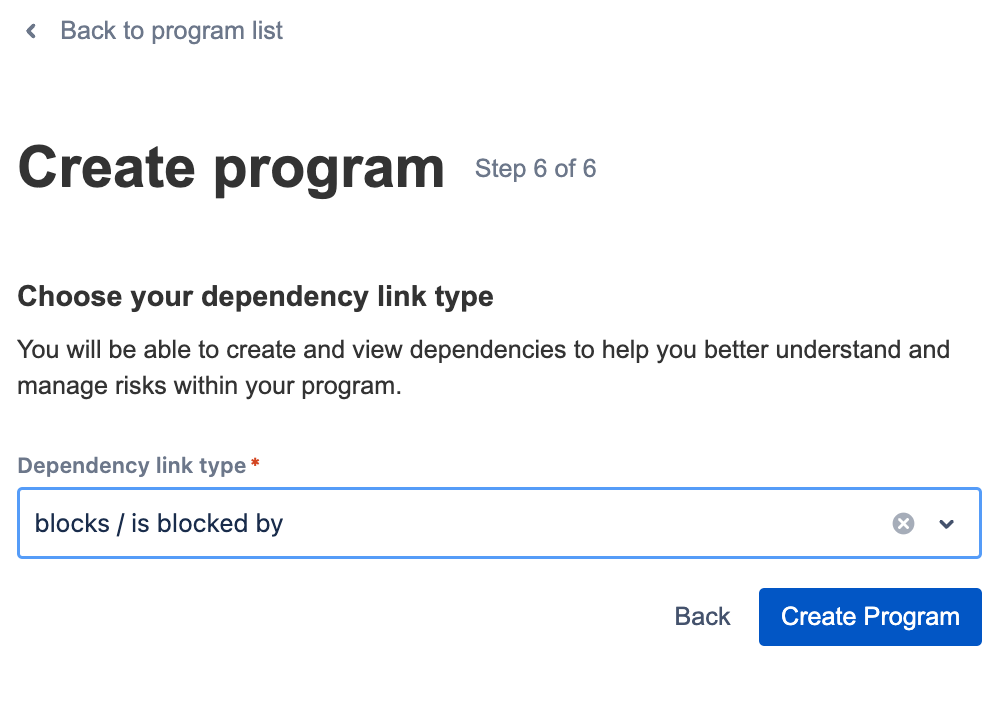
Once you’ve created your Program, you’ll be taken to the new Program to create your first Increment.
Edit a Program
Users with Manage Programs permission can edit their Program from the Program roadmap page.

In this menu, you can:
Edit the Program Name.
If you edit the Program Name, the Program custom field will also reflect this change.
Add or remove team boards from the Program.
If you’re using a dedicated board for your Roadmap issue source, change the board.
Add or change a third level hierarchy board.
Enable or change date syncing at the for tighter integration with Jira
Change the dependency link type visualised on the Program.
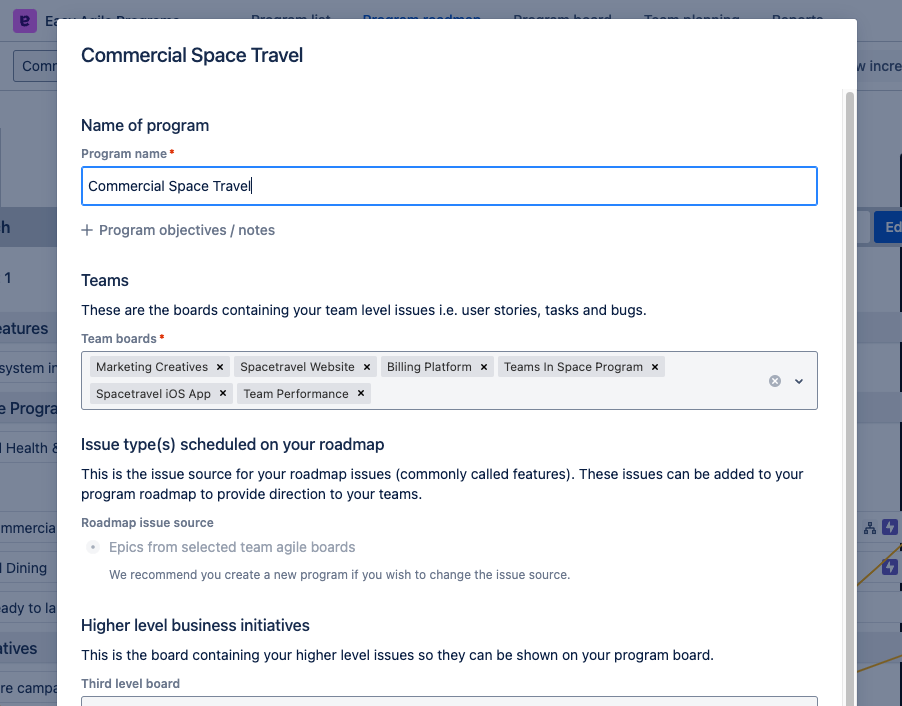
Delete a Program
You need Jira Administrator permission to delete a Program. Find the “Delete program” option on a Program on the Program list page:

As an extra safeguard, you will be required to enter the program name into the dialog to confirm the delete action.

On Data Center app versions v5.2.1 or earlier, users with Manage Programs permission can also delete a Program.
Easy Agile support
If you’re having issues creating or configuring a Program, reach out to our support team here! We can answer any questions, walk you through the process, and help you find a configuration that works for you.
